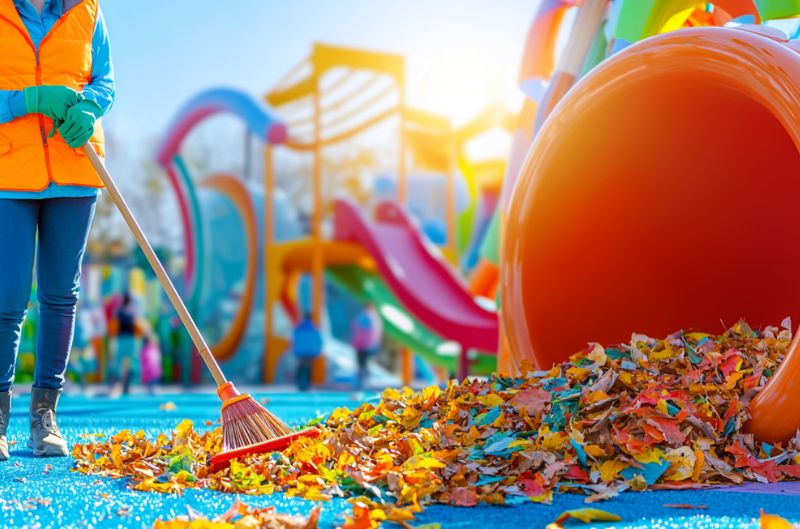
How Communities Can Organize Playground Maintenance Programs
Author: Austin Stanfel
Playgrounds are vital for childhood development, social interaction, and community cohesion. However, maintaining these areas is crucial to ensure safety, longevity, and continued enjoyment. Communities can organize effective playground maintenance programs by adopting structured approaches that involve planning, collaboration, and routine upkeep. This article explores actionable strategies to establish and sustain playground maintenance programs.
The Importance of Playground Maintenance
Playgrounds serve as hubs for physical activity, creativity, and social bonding. Proper maintenance protects these spaces from hazards while preserving their value for the community. Neglecting playground upkeep can lead to safety risks, diminished usability, and reduced community engagement. Key reasons for prioritizing maintenance include:
- Safety: Over 200,000 children in the U.S. visit emergency rooms annually due to playground-related injuries. Regular inspections can prevent accidents caused by broken equipment or unsafe surfaces.
- Community Value: Well-maintained playgrounds foster pride and encourage families to use these spaces as gathering points.
- Liability Management: Documented maintenance processes demonstrate a commitment to safety and help limit legal risks in case of accidents.
Steps to Organize Playground Maintenance Programs
1. Develop a Comprehensive Management Plan
A playground management plan outlines long-term goals for upkeep and safety. This plan should include:
- Maintenance schedules are tailored to equipment age, usage levels, and climate conditions.
- Strategies for landscaping around play areas to ensure environmental sustainability.
- Risk management protocols to address hazards promptly.
2. Conduct Regular Inspections
Routine inspections are essential for identifying potential hazards early. Communities can adopt the following practices:
- Weekly visual checks for litter, broken equipment, or damaged surfaces.
- Operational inspections to ensure equipment functions correctly.
- Comprehensive audits involving professionals for detailed assessments.
3. Assign Responsibilities
Form a dedicated team to oversee maintenance tasks. Responsibilities may include:
- Cleaning play areas after events or adverse weather conditions.
- Repairing damaged structures or replacing worn-out parts.
- Documenting all maintenance activities for accountability and tracking.
4. Engage Professional Services
For complex repairs or compliance with safety standards, communities can collaborate with professional vendors who offer inspection services, equipment replacements, and surface repairs. Ensure vendors are licensed, insured, and knowledgeable about accessibility standards like the ADA.
Community Involvement in Maintenance
1. Foster Ownership Through Engagement
Involving community members in playground projects builds a sense of pride and responsibility. Strategies include:
- Hosting workshops to gather feedback on design and maintenance needs.
- Forming advisory committees that represent diverse perspectives within the community.
2. Organize Volunteer Efforts
Volunteers can assist with cleaning playgrounds, conducting basic inspections, or helping with minor repairs. Community events like “clean-up days” can encourage participation while fostering camaraderie among residents.
3. Collaborate With Local Organizations
Partnering with schools, businesses, and nonprofits can provide additional resources, such as funding and expertise. These collaborations may include sponsorship opportunities or shared networks for advocacy efforts.
Best Practices for Sustained Maintenance
1. Schedule Routine Upkeep
Establish clear timelines for inspections and repairs based on usage levels and seasonal conditions. Prioritize tasks like tightening loose fasteners, replenishing surfaces, and replacing worn parts regularly.
2. Promote Safety Standards
Adhere to guidelines set by organizations like the National Recreation and Park Association (NRPA) or local councils to ensure compliance with safety benchmarks. Training programs such as the Certified Playground Safety Inspector (CPSI) certification can equip volunteers or staff with essential skills.
3. Utilize Technology
Adopt digital tools like mobile apps for real-time issue reporting or software for managing maintenance schedules efficiently. These tools streamline documentation processes and enhance communication among team members.
4. Educate Residents
Raise awareness about playground safety through community newsletters or social media platforms. Encourage residents to report hazards promptly and participate in ongoing upkeep initiatives.
Benefits of Organized Maintenance Programs
A well-maintained playground offers numerous advantages:
- Enhanced Safety: Regular upkeep minimizes risks associated with faulty equipment or unsafe surfaces.
- Community Cohesion: Playgrounds serve as gathering spaces that strengthen social ties among neighbors.
- Economic Efficiency: Preventive maintenance reduces the need for costly replacements while extending the lifespan of equipment.
- Environmental Sustainability: Incorporating eco-friendly materials and landscaping promotes biodiversity while reducing waste.
Conclusion
Organizing a playground maintenance program invests in community well-being and child development. By combining structured planning with active community engagement, neighborhoods can create safe, enjoyable play spaces that thrive for years. Whether through volunteer efforts or professional partnerships, maintaining these vital areas ensures they remain a cornerstone of vibrant communities.

